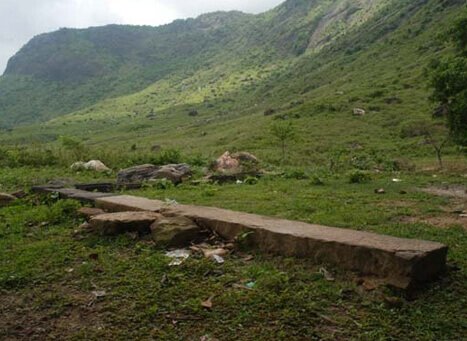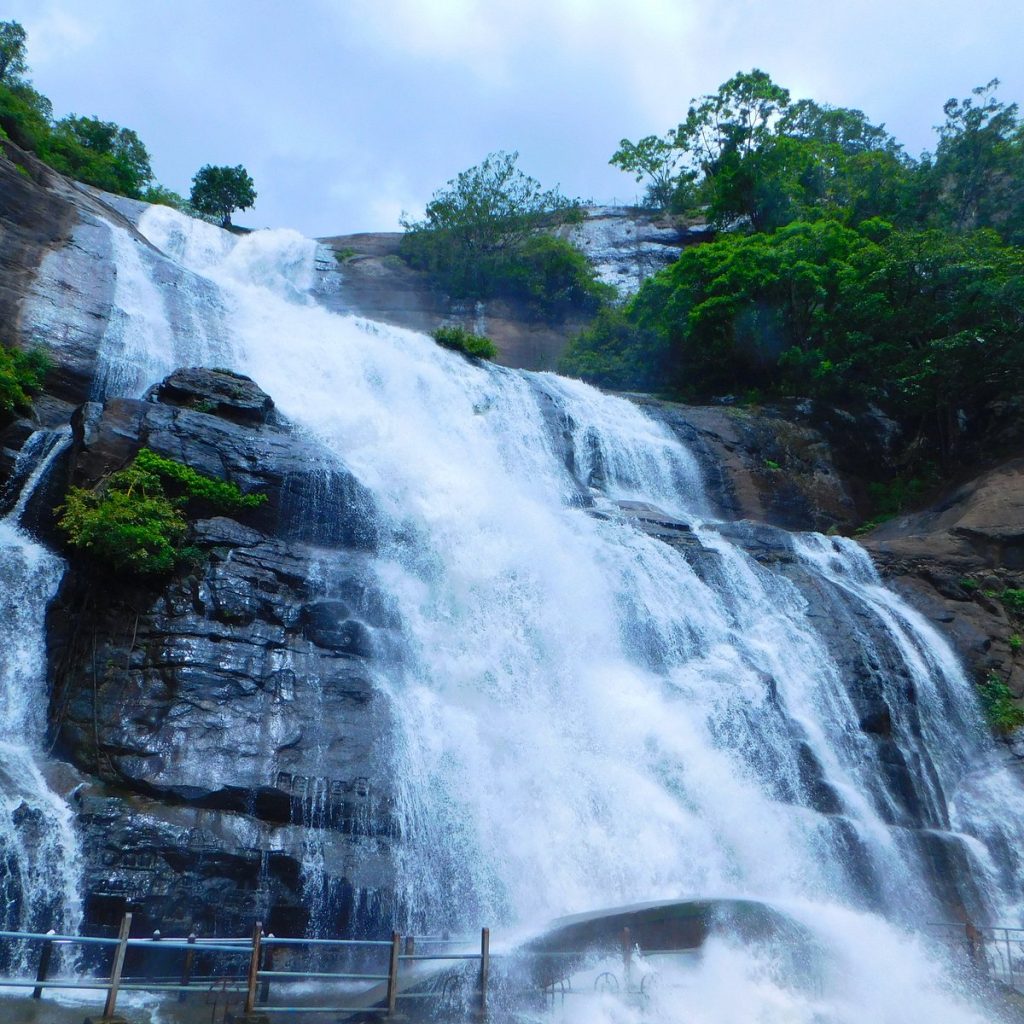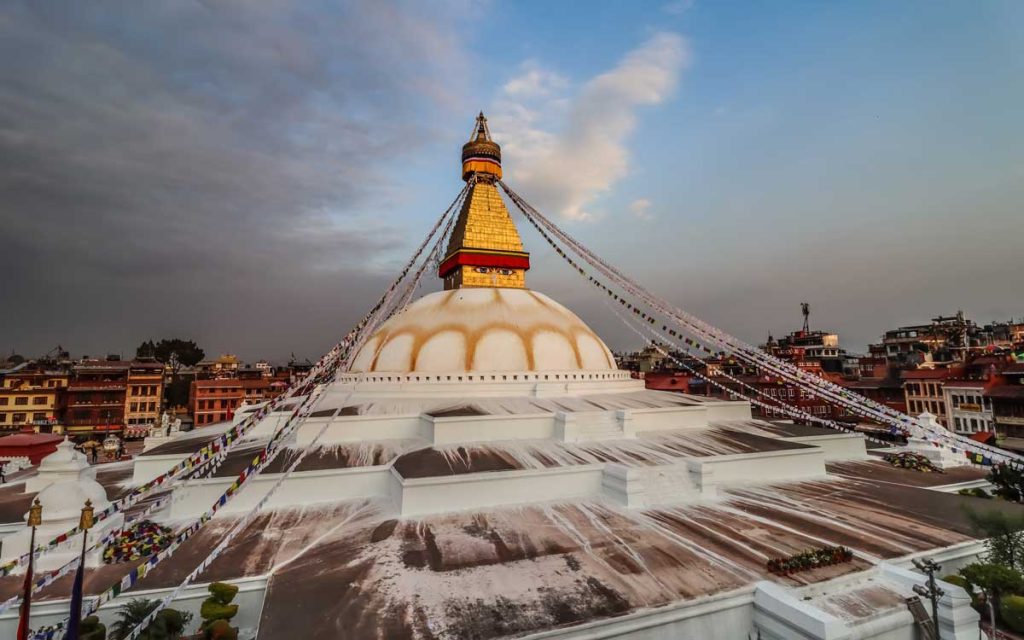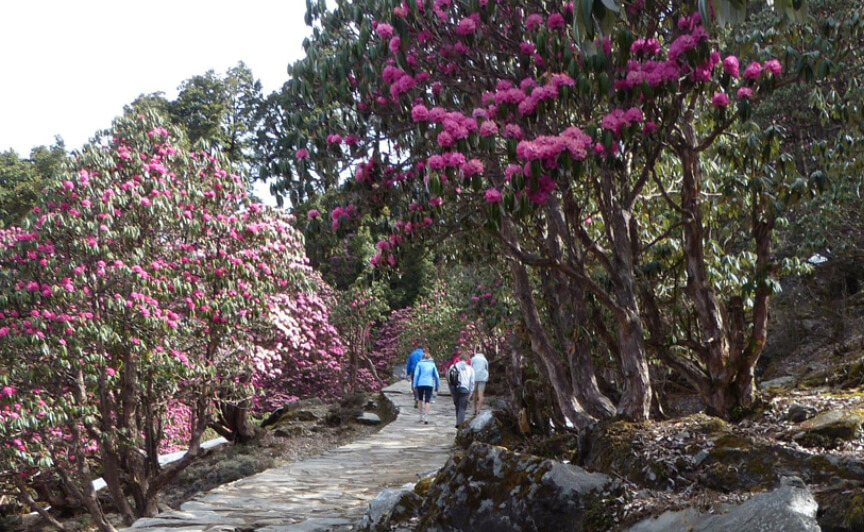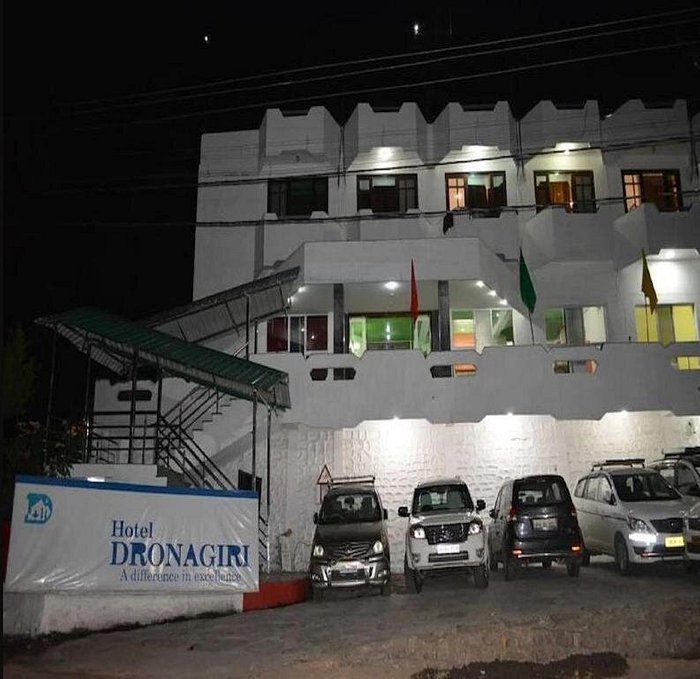The Tomb of Fateh Jung stands as a fascinating piece of history. This impressive structure draws visitors with its architectural beauty and rich past.
Located in Alwar, India, the tomb is dedicated to Fateh Jung, a minister in the royal court. Built in the 19th century, it showcases a blend of Mughal and Rajput architecture. The tomb’s intricate designs and peaceful surroundings make it a notable attraction.
Exploring this site offers a glimpse into the region’s heritage and artistic mastery. Whether you’re a history enthusiast or a curious traveler, the Tomb of Fateh Jung promises an enriching experience. Let’s dive deeper into what makes this historical site so special.
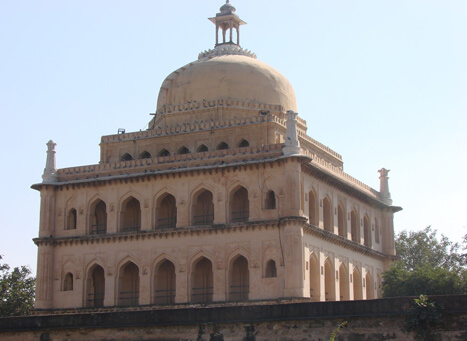
Credit: www.tourmyindia.com
Historical Background
The Tomb of Fateh Jung stands as a striking example of Mughal architecture. Built in the 17th century, it honors Fateh Jung, a key figure in the Mughal court. This historical site showcases intricate carvings and elegant domes.
## Historical Background The Tomb of Fateh Jung, located in the vibrant city of Alwar, India, stands as a testament to Mughal architecture and historical richness. As you walk through its majestic corridors, you can almost hear the whispers of the past. Understanding the historical background of this significant monument offers a glimpse into the life and times of Fateh Jung, and the architectural prowess of that era. ###Origins Of Fateh Jung
Fateh Jung was a prominent figure in the 17th century. He served as a minister in the court of the Mughal Emperor Akbar. Fateh Jung was known for his wisdom and loyalty, earning him great respect and influence in the royal court. His life and achievements have left an indelible mark on history, making his tomb a place of great historical interest. ###Construction Of The Tomb
The construction of the Tomb of Fateh Jung began in the late 17th century. The tomb is an architectural marvel, showcasing the exquisite craftsmanship of that time. Built with red sandstone and adorned with intricate carvings, the tomb reflects the grandeur of Mughal architecture. Imagine standing in front of the tomb, admiring the detailed work on the arches and domes. Each element tells a story of dedication and artistry. The tomb’s location was strategically chosen to offer a serene and picturesque environment, making it a peaceful resting place for Fateh Jung. The construction took several years, involving skilled artisans and laborers who meticulously worked on every detail. As you explore the tomb, you can see the blend of Persian and Indian architectural styles, a hallmark of Mughal construction. Have you ever wondered how such monuments withstand the test of time? The answer lies in the quality of materials and the precision in construction techniques used by the builders of that era. As you delve deeper into the history of the Tomb of Fateh Jung, you will find yourself transported to a time of grandeur and elegance. The historical background of this monument not only highlights the life of a notable figure but also showcases the rich cultural heritage of Mughal India. What are your thoughts on preserving such historical sites for future generations? The Tomb of Fateh Jung is a reminder of our past, urging us to appreciate and protect our heritage.
Credit: en.wikipedia.org
Architectural Marvel
The Tomb of Fateh Jung in Alwar, India, showcases intricate Mughal architecture. This historical monument stands as an elegant example of 18th-century craftsmanship. Its stunning domes and arches captivate visitors.
The Tomb of Fateh Jung is not just a resting place; it is an architectural marvel that captivates the soul. Every corner of this historic monument speaks of intricate craftsmanship and a deep sense of cultural heritage. If you’re someone who appreciates fine architecture, the Tomb of Fateh Jung is a must-visit. Let’s dive into what makes this structure so extraordinary.Design Elements
One of the striking features of the Tomb of Fateh Jung is its symmetrical design. The structure embodies a blend of Mughal and Rajasthani architectural styles, making it unique. Imagine standing before a grand entrance adorned with delicate carvings. The patterns on the walls are not just visually appealing but also tell a story of the era it was built in. The balance in symmetry and the intricacy of the patterns can leave anyone in awe. Have you ever thought about how symmetry can evoke a sense of harmony? Next time you visit, notice how your eyes naturally follow the lines and curves, creating a calming effect.Materials Used
The tomb is primarily built using red sandstone, a material known for its durability and beauty. This choice of material adds to the monument’s grandeur and longevity. Red sandstone not only provides an aesthetic appeal but also helps in maintaining a cooler temperature inside the tomb. This is particularly useful in the scorching heat of the region. Have you ever touched the cool surface of a stone on a hot day? Imagine that sensation amplified by the grandeur of the tomb’s structure. Other materials like marble and semi-precious stones are also used, especially in the inlay work. These materials add a layer of richness and opulence to the tomb. Next time you visit, take a moment to appreciate the craftsmanship. Run your fingers over the inlaid stones and feel the smooth transitions between different materials. It’s like a history lesson you can touch. When you think about it, the materials used are not just for beauty. They serve practical purposes too, making the tomb a perfect blend of form and function. So, what do you think? Does the architectural marvel of the Tomb of Fateh Jung intrigue you enough to visit and experience its grandeur firsthand?Mystical Legends
The Tomb of Fateh Jung, a relic of the past, holds many mystical legends. These stories have been passed down through generations, adding an aura of mystery. Visitors often feel a sense of awe and wonder.
Local Folklore
Local folklore surrounds the Tomb of Fateh Jung. One popular tale speaks of a hidden treasure. Many believe it lies beneath the tomb, guarded by spirits. Another story tells of a curse. Anyone who tries to disturb the tomb faces misfortune.
Children grow up hearing these legends. They often play around the tomb, imagining the ancient stories. Elders share these tales, keeping the folklore alive. The tomb becomes a bridge between the past and present.
Spiritual Significance
The tomb holds spiritual significance for many. Some believe the tomb has healing powers. They visit to seek blessings and find peace. The tomb offers a place for reflection and connection with the past.
Others see it as a site of meditation. The serene environment helps calm the mind. The tomb’s energy is thought to cleanse the soul. Pilgrims often leave offerings, showing respect and seeking favor.
The Tomb of Fateh Jung, therefore, is more than a historical site. It is a place of spiritual importance and mystical legends. These stories and beliefs enrich the experience of every visitor.
Cultural Impact
The Tomb of Fateh Jung stands as a significant cultural symbol. This historical monument has greatly influenced the local culture. It has shaped traditions and customs over the years. Its impact is still visible in many aspects of local life.
Influence On Local Traditions
The Tomb of Fateh Jung has inspired many local traditions. Families visit the tomb on special occasions. They seek blessings and offer prayers. This tradition has passed down through generations. It reflects the deep respect the community holds for Fateh Jung.
Local schools often organize trips to the tomb. These visits teach students about their heritage. The tomb also serves as a backdrop for storytelling. Elders recount tales of Fateh Jung’s bravery and wisdom. These stories preserve local history and values.
Role In Festivals
The tomb plays a key role during local festivals. It becomes a focal point for celebrations. During these times, the area around the tomb comes alive. Colorful decorations and lights adorn the tomb. People gather to celebrate and honor Fateh Jung.
Special prayers and rituals take place at the tomb. These activities bring the community together. Traditional music and dance performances are common. They add to the festive atmosphere. The tomb remains a symbol of unity and cultural pride.
Preservation Efforts
Preservation efforts for the Tomb of Fateh Jung focus on maintaining its historical significance. These efforts ensure the tomb’s architecture and artistry remain intact for future generations.
The Tomb of Fateh Jung is a historical gem, capturing the essence of Mughal architecture. Preserving this monument is crucial to maintaining its historical value. Over the years, several preservation efforts have been made to ensure its longevity.Restoration Projects
Restoration projects have played a key role in preserving the Tomb of Fateh Jung. Experts have worked tirelessly to restore its intricate designs. They have used traditional techniques to retain the original charm. These projects focus on both structural and decorative elements. The aim is to prevent further decay. Regular inspections are part of the restoration plans. They help identify areas needing immediate attention.Challenges Faced
Preservation efforts face several challenges. One major issue is environmental damage. Pollution and weather conditions take a toll on the structure. Financial constraints also pose a significant problem. Adequate funding is often not available. This slows down the restoration process. Another challenge is the lack of skilled labor. Traditional craftsmanship is hard to find these days. Efforts to overcome these challenges are ongoing. Authorities are collaborating with international experts. They aim to find sustainable solutions. Public awareness campaigns are also in place. They educate people about the importance of preservation. The Tomb of Fateh Jung stands as a testament to history. With continued efforts, it will remain a symbol of cultural heritage.Tourist Attraction
The Tomb of Fateh Jung is a beautiful historical site in Alwar, India. This five-story structure features stunning Mughal architecture and intricate carvings. It offers a glimpse into the rich history and culture of the region.
The Tomb of Fateh Jung is a stunning historical site. It attracts visitors from around the world. This beautiful monument is located in Alwar, Rajasthan. The tomb is known for its intricate architecture and peaceful surroundings. It offers a glimpse into the rich history and culture of the region.Visitor Experience
Visitors often feel awe-struck by the tomb’s grandeur. The massive structure is built with red sandstone. It has five stories and is adorned with intricate carvings. The tomb’s design reflects Mughal and Rajput styles. Many find the peaceful atmosphere perfect for reflection. The tomb’s gardens are another highlight. They provide a serene setting for a leisurely stroll. The greenery and flowers add to the site’s charm. Some visitors enjoy sitting and soaking in the beauty.Guided Tours
Guided tours are available for those who want to learn more. These tours offer insights into the tomb’s history. Guides share fascinating stories about Fateh Jung. They explain the significance of the architectural details. Tours usually last about an hour. They cover all major parts of the tomb. Visitors can ask questions and interact with the guides. This makes the experience more enriching and informative. Booking a guided tour is easy. Most can be booked online or at the site. It’s a great way to enhance your visit. “`Academic Research
The Tomb of Fateh Jung stands as a testament to Mughal architecture. This monument has piqued the interest of many scholars. Academic research has delved deep into its historical significance and architectural marvels. In this section, we will explore the studies conducted and the historical findings related to the Tomb of Fateh Jung.
Studies Conducted
Various studies have been conducted on the Tomb of Fateh Jung. These studies explore its architectural design, historical context, and cultural impact. Researchers have analyzed its unique blend of Mughal and Rajput architectural styles. They have documented the intricate carvings and structural details. These studies provide insights into the craftsmanship of that era.
Academic institutions have also contributed to this research. They have hosted seminars and workshops focused on the tomb. These events bring together historians, architects, and students. They discuss and share their findings, enhancing our understanding of the monument. The collaborative efforts have enriched the academic discourse surrounding the tomb.
Historical Findings
The historical findings about the Tomb of Fateh Jung are fascinating. Researchers have traced its origins back to the early Mughal period. They have discovered that Fateh Jung was a nobleman in the Mughal court. The tomb was built as an homage to his contributions.
Historians have uncovered various artifacts during their studies. These include ancient manuscripts and relics. These findings shed light on the life and times of Fateh Jung. They also provide a glimpse into the socio-political landscape of that era.
Another significant finding is the tomb’s architectural influence. It reflects the confluence of Mughal and Rajput styles. This blend signifies the cultural exchanges between the two regions. The tomb stands as a symbol of this rich heritage.

Credit: en.wikipedia.org
Future Prospects
The Tomb of Fateh Jung holds immense historical significance and potential for tourism. This architectural marvel can attract history enthusiasts and cultural explorers. Preservation efforts may boost local economy and community engagement.
### Future Prospects The Tomb of Fateh Jung is an architectural gem that stands as a testament to history and culture. As we look to the future, there are exciting prospects for its development and community engagement. These prospects not only aim to preserve the site but also enhance its accessibility and significance for future generations.Potential Developments
The future holds promising potential developments for the Tomb of Fateh Jung. One of the key areas of focus is infrastructure improvement. Better pathways, signage, and lighting can significantly enhance the visitor experience. These changes would make it easier for tourists to navigate the site and appreciate its historical value. Digital integration is another exciting development. Imagine using your smartphone to access an augmented reality tour, which overlays historical information and stories as you explore the tomb. This technology can make history come alive in ways that static displays cannot. Conservation efforts are crucial. This involves not just restoring the tomb’s physical structure but also maintaining its surroundings. Gardens, benches, and shaded areas can transform the site into a serene place for reflection and learning.Community Engagement
The local community plays a vital role in the future of the Tomb of Fateh Jung. Engaging the community can create a sense of ownership and pride. Organizing local events, such as history fairs and cultural festivals, can draw people together and foster a deeper connection with the site. Educational programs are another way to engage the community. Schools can organize field trips, and local historians can conduct workshops. These activities not only educate but also instill a sense of responsibility toward preserving the tomb. Volunteering opportunities can also be a game-changer. Local residents can participate in clean-up drives, guided tours, and even contribute to the maintenance of the site. This hands-on involvement can transform the tomb from a tourist attraction to a community landmark. Have you ever thought about how you could contribute to preserving such a historical site? Your involvement, no matter how small, can make a significant difference. Whether through visiting, volunteering, or simply spreading the word, your actions can help ensure that the Tomb of Fateh Jung remains a cherished part of our heritage. In essence, the future of the Tomb of Fateh Jung is bright, filled with opportunities for development and community engagement. By focusing on these areas, we can ensure that this historical marvel continues to inspire and educate for generations to come.Frequently Asked Questions
What Is The Tomb Of Fateh Jung?
The Tomb of Fateh Jung is a historical monument in Rajasthan, India. It was built in the 19th century. The tomb is known for its impressive architecture.
Where Is Fateh Jung’s Tomb Located?
Fateh Jung’s tomb is located in Alwar, Rajasthan. Alwar is a city known for its rich history. The tomb is a popular tourist attraction.
Who Was Fateh Jung?
Fateh Jung was a minister in the court of Maharaja Bakhtawar Singh of Alwar. He was respected for his administrative skills. His tomb is a tribute to his legacy.
What Is Unique About Fateh Jung’s Tomb?
The tomb’s architecture is a blend of Mughal and Rajput styles. Its intricate designs and carvings attract many visitors. The tomb’s dome is particularly striking.
Conclusion
The Tomb of Fateh Jung is a remarkable piece of history. Its architectural beauty captivates visitors. Each detail tells a story of the past. Exploring the tomb offers a unique glimpse into history. This site is a must-see for culture enthusiasts.
It stands as a testament to heritage and artistry. Visiting the Tomb of Fateh Jung enriches your knowledge of history. So, plan a trip and discover its wonders. This historic site promises an unforgettable experience.
{ “@context”: “https://schema.org”, “@type”: “FAQPage”, “mainEntity”: [ { “@type”: “Question”, “name”: “What is the Tomb of Fateh Jung?”, “acceptedAnswer”: { “@type”: “Answer”, “text”: “The Tomb of Fateh Jung is a historical monument in Rajasthan, India. It was built in the 19th century. The tomb is known for its impressive architecture.” } } , { “@type”: “Question”, “name”: “Where is Fateh Jung’s tomb located?”, “acceptedAnswer”: { “@type”: “Answer”, “text”: “Fateh Jung’s tomb is located in Alwar, Rajasthan. Alwar is a city known for its rich history. The tomb is a popular tourist attraction.” } } , { “@type”: “Question”, “name”: “Who was Fateh Jung?”, “acceptedAnswer”: { “@type”: “Answer”, “text”: “Fateh Jung was a minister in the court of Maharaja Bakhtawar Singh of Alwar. He was respected for his administrative skills. His tomb is a tribute to his legacy.” } } , { “@type”: “Question”, “name”: “What is unique about Fateh Jung’s tomb?”, “acceptedAnswer”: { “@type”: “Answer”, “text”: “The tomb’s architecture is a blend of Mughal and Rajput styles. Its intricate designs and carvings attract many visitors. The tomb’s dome is particularly striking.” } } ] }
